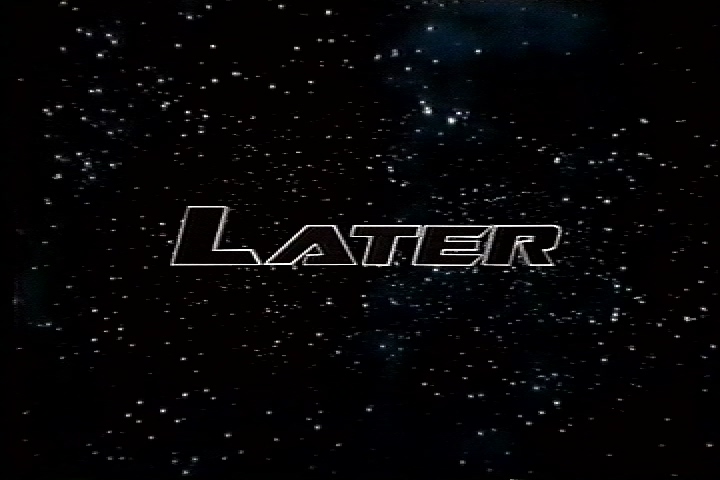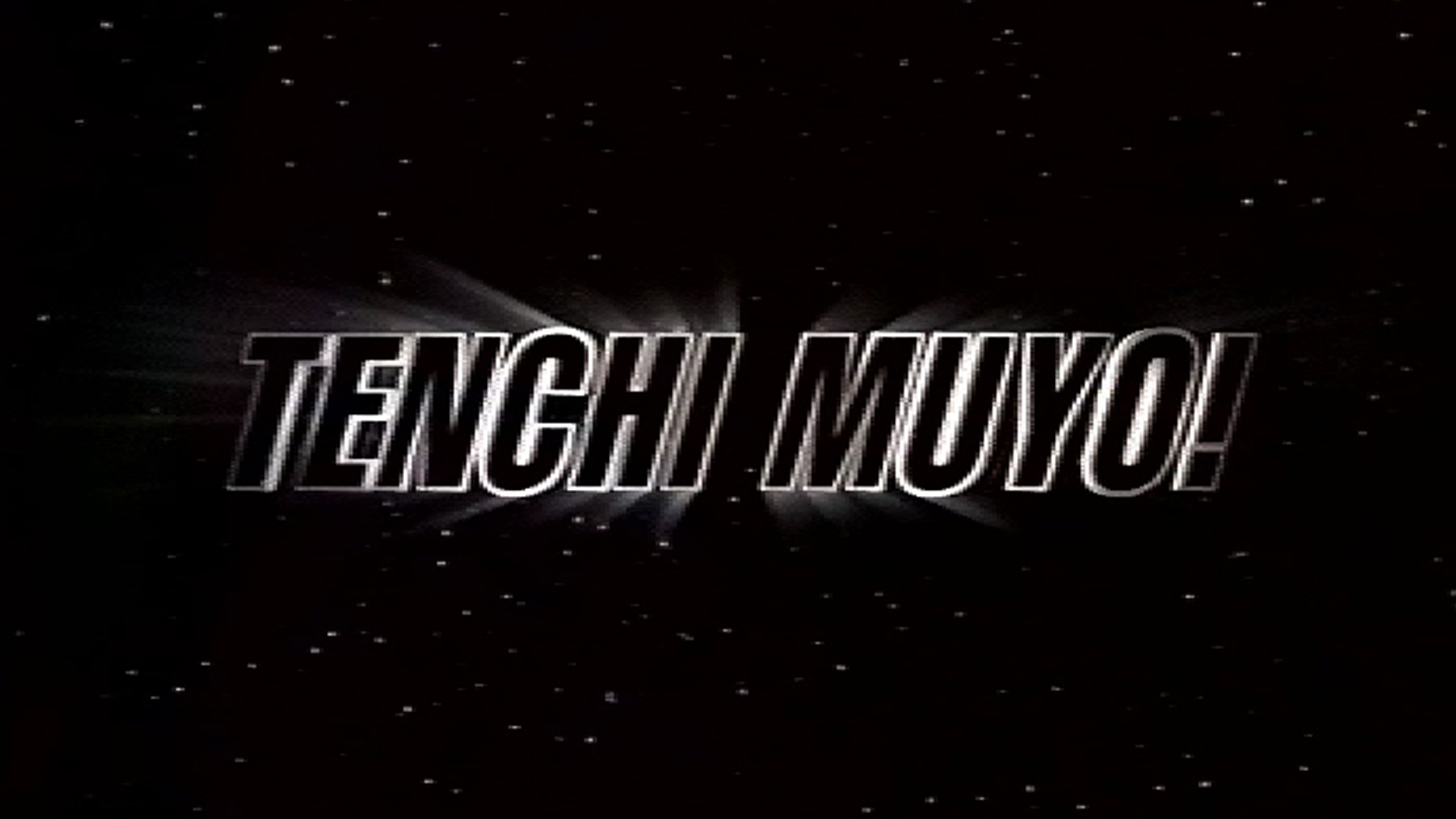
For the first time ever, the Toonami versions of OVA1/2, Universe, and Tokyo are available online! On their respective archive.org pages you can access each episode easily.
Watch now: OVA1/2, Tenchi Universe, Tenchi in Tokyo.
For users who keep up with contemporary anime communities, we also have an upload for the entire run available on Nyaa.
It’s been quite a journey in getting these episodes from analog to digital. If you’re interested in reading about the process of how these almost lost-to-time edits came into our hands and how we’ve gone about preserving them before the tapes rot, then sit back and enjoy the story below!
Part 1: Toonami – A Love Story.
Tenchi Muyo! and Toonami are tied together like the red thread of fate often times referenced in many East Asian myths. For those who aren’t aware, Toonami was a programming block on the Cartoon Network channel. Starting in 1997, it did one thing for anime that no other channel in the English-speaking world had ever done: showcased anime during “PrimeTime” (In North America at least, this was 4pm to 7pm Eastern Standard time). Before the internet, having this block of time meant having the most eyes on your product, meaning exposure was huge. Oftentimes whoever got on this block, regardless of the channel, was “made.”
However, it wouldn’t be until mid 1999, with a soft-rebranding, a new host, and an almost entirely anime-focused block, that Toonami would take over the world.
And on July 3rd, 2000, an entire generation was introduced to Tenchi Muyo! for the first time.
Thanks to the efforts of Jason DeMarco, Sean Akins, Gill Austin, Sean Polinski, and the rest of the Toonami crew, the “Toonami generation,” still to this day, is the largest block of Tenchi Muyo! fans. Whether it was Toonami US, UK, or Australia. Tenchiforum is a testament to this fact. I personally would not be here were it not for Toonami, so to say that fans of Tenchi Muyo! hold Toonami in a high regard is an understatement.
I had always wanted to somehow, some way, get the Toonami version of Tenchi up for everyone to see again, but my old Toonami VHS recordings were long gone, and I figured trying to piece together the Toonami version from other people’s tapes would just be too hard with how many episodes were broadcast, that was until… 2012
In mid-to-late 2012, I found out that Pioneer actually released a home video version of what was shown on Toonami. It was simply released as “Tenchi Muyo!” in those big, white, clam shell VHS cases (that most people probably remember for old Disney movies). I felt as though I had struck gold! I was able to get a hold of the first two OVA, and was able to rip them to my computer.

Though I was high on my endorphin-induced nostalgia, I ran into a couple of unforeseen problems.
First and foremost, the equipment I was using was not great. I used an old StarTech composite to USB dongle and the software that came with it. While this isn’t necessarily bad at first glance (it doesn’t support Windows 10), I had no experience whatsoever in the field of digital transfer. While I think my rips were okay for the time, I knew even then that they were too low of bitrate and the quality of the rips suffered for it.
Because I also had no VCR at the time that had S-Video output, I was only able to output from composite, which meant the whopping 240p equivalent VHS tapes look fuzzier than they probably should. (I realize that VHS is technically an analog format, meaning that a 1:1 equivalent digital representation is hard to pin down or that someone might argue that it did technically output 480i over composite, but basically it was 240p.)
Another problem was the software itself, I had no idea about Virtualdub, AmaRecTV, or other helpful capture software, so I only recorded at a lower bitrate, again producing an inferior quality rip.
I also ran into the problem of showcasing the videos. Funimation (who now owns the vast majority of the Tenchi Muyo! franchise in North America) had finally started really cracking down on people uploading videos to Youtube. Even though my videos were not completely the same, the algorithm immediately flagged and blocked them. This led me to uploading the videos to Facebook. I had to cut them in half because of Facebook’s restriction to roughly only 12 minutes of video. Somehow in the process, some of the videos had audio drop out for a minute or two, and for some the audio dropped out completely.
Arguably the biggest blow though, was when I learned that this set of Toonami tapes was incomplete. Pioneer stopped producing the Toonami version for home video after they finished releasing Universe. Meaning, the only way to get the Toonami version of Tenchi in Tokyo, was hope that someone, somewhere, had taped it 11 years earlier.
While Tenchi in Tokyo has been getting more appreciation from fans as of late – thanks in part to most newer entries in the Tenchi OVA sucking harder than a vacuum – in the year 2000, it was the black sheep of the Tenchi Muyo! franchise. So expecting fans to have recorded any of it, let alone the entire series, was the long shot of all long shots. But even still, I made a post on the forum in 2013 asking if anyone knew anyone that might have anything.
Naturally, no one had any leads, and all of these previous problems meant that this project would, frustratingly, have to be shelved indefinitely.
Or at least, that’s what I thought.
Part 2: Deferred Dreams Don’t Die.
On April 5th, 2019, a person by the name of Talos dropped into our Discord server, and posted an introduction. Like so many, they had gotten into Tenchi through Toonami, but what would change everything, was this.

I couldn’t believe what I was reading, someone actually had it!
Instinctively, I reached out to Talos via PM to ascertain how to go about acquiring these tapes, and admittedly, to see how legit this claim actually was. Because the fact of the matter is, when you’ve been around Tenchi fandom as long as I have, you’ll quickly realize the best bullshitters in the world come from this fandom.
But Talos was more than the genuine article! They sent over pictures and an incredibly detailed analysis of the quality of their tapes, watching through them all again to prove to me that their claim was valid.
It can’t be said enough that this all would not be possible without Talos, their willingness to work with me and send me their own personal tapes that they’ve kept for almost two decades just goes to show how awesome they are and how much they care about the fandom.
So the deal was struck, and the dream that laid deferred for almost six years lived again.
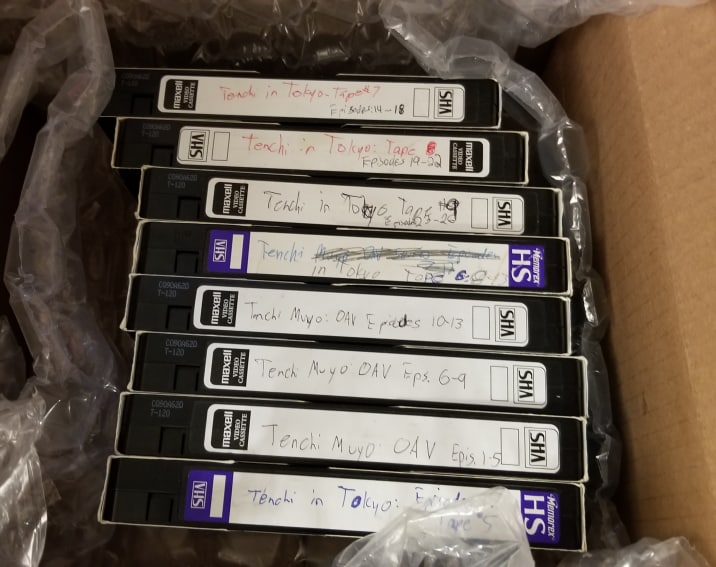
But with dreams from the past, come the demons that plagued them way back when. I still only had the setup I once had, and at this time I was really trying to be tight with my finances for a number of different reasons, but this opportunity was too good to pass up, I wasn’t going to let this dream go, even if it wasn’t perfect.
Talos’ tapes showed up, and I rolled up my sleeves.
So I put in the first tape, the first seven episodes of Tokyo, into the old VCR I used to originally rip the Pioneer tapes, a JVC HR-VP650U….
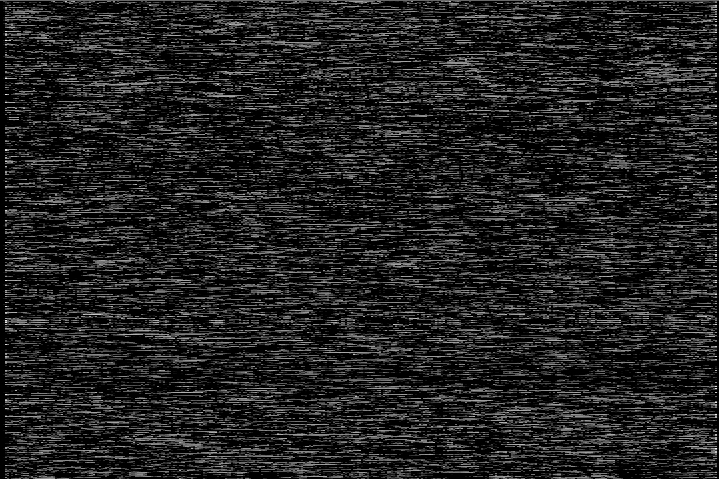
And static…
Or rather, a tape that would play for 3 seconds, then immediately drop to static.
This wouldn’t work.
I then tried my other VCR, a Sony SLV-N50 from the mid-to-late 90’s that I was able to “fix” by removing the old Android Kikaider tape that got stuck in there many years prior.
It worked!…..but…..not all that well.
While it did actually play the tape relatively smoothly, the colors were completely washed out in comparison to the JVC, and it had this weird color flickering that was particularly noticeable when black backgrounds were on screen. (This was not unique to this tape, it did it with everything I put in there.)
As much as it pained me, there was no way I was going to rip it with this setup.
So the hunt began for not just a replacement VCR, but one that was high quality and recommended among enthusiasts for digital transfer. Which meant research and long winding rabbit holes of non-answers and vagueness, and unfortunately, money.
Without a doubt, the de facto list of best VCRs for transferring comes from digitalFAQ.com. This list is not only informative but gives you a broad range of ones to look for in the event you can’t find an “elite” one. However, this list has also become the de facto list used by people who are hawking their sets on eBay to try and get every penny from enthusiasts and new-comers as possible.
After three frustrating weeks of losing bid wars on eBay, someone finally put up one of the good sets, the JVC SR-V10U. I quickly sent them what I thought was a reasonable but not bank-breaking offer….
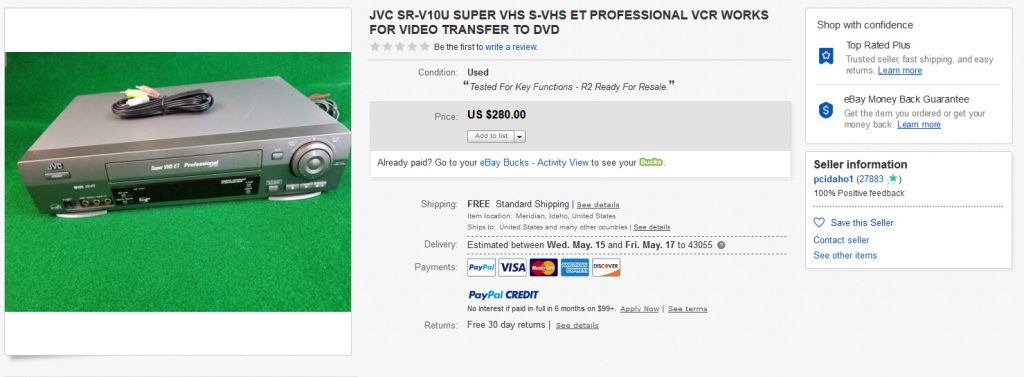
And they accepted! The beast was finally mine.
Immediately upon unwrapping and testing it, the quality difference between what I had then and what I was looking at now was staggering. The SR-V10U had beautiful color, while having the incredible ability to stabilize the old tapes with its TBC (Time Base Corrector), as well as onboard Video Stabilization option. Combined with the ability to output video via the superior S-Video cable, I now had something that, despite its age and typical old VHS wear, was way better than I could have imagined.
Part 3: No Need for Nostalgia.
You’re probably thinking to yourself “Dagon, why go through the trouble? the OVA has a beautiful Blu-ray release, and Universe and Tokyo have pretty decent DVD releases. Why would you ever want to rip old VHS tapes of an inferior quality release that was in some cases censored?”
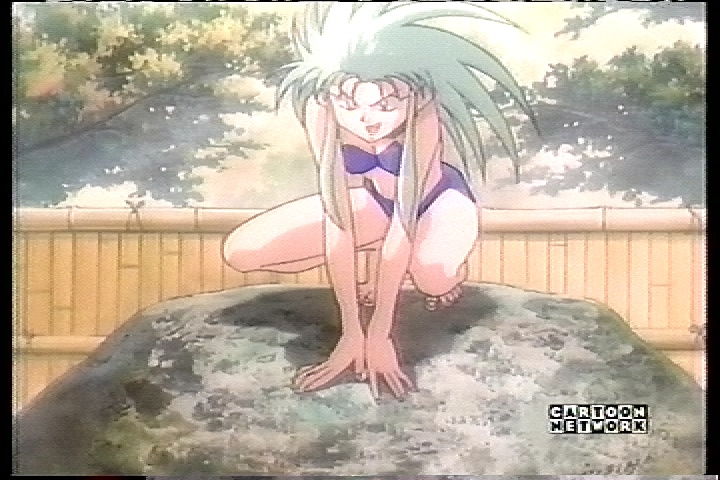
Because this version of Tenchi Muyo! is a piece of history. Not only is it a piece of Tenchi history, but a piece of Toonami history as well. Being able to preserve this in the best quality possible is being able to point to future generations and say “This is why I’m here.”
For a lot of us it’s about taking us back to a simpler time, grade school, high school, university. Taking us back to a time before the internet was what it is today.
So now we can, after almost 20 years, re-watch the version of Tenchi Muyo! that brought so many of us joy and wonder.
